A gunshot rings through a valley of Yushan National Park (玉山國家公園) in the middle of the night. A light from a motorcycle pierces the trees. Impossible. We're a dozen or more kilometers from the nearest stretch of pavement on a narrow trail that clings precariously to the side of a mountain; nobody could get here on a bike, certainly not at night. Another shot rings out and the light comes closer; it's not a motorcycle, but a man with a motorcycle light strapped to his head and a car battery slung around his neck. His name is Ming-chen and he's hunting wild boar.
Ming-chen is a member of Yushan National Park's trail maintenance crew, part of a detail of 15 or so Aborigines recently sent to build new footbridges along a section of the Patungkuan Old Trail (八通關古道) at an elevation of some 2,500m. He's been here for the past three weeks and in that time hasn't showered, changed clothes or -- even more inconvenient -- been able to use his cellphone. More happily, he has his meals prepared for him and a view from his workplace that is the envy of any penthouse-suite executive. Lodging is decided by the nature of his work. For the past few weeks it's been a spacious 2m-wide portion of the trail covered with large plastic sheets and dry-grass matting to serve as a bed for the entire crew. Other nights they'll sleep in one of the several mountain huts that dot the park. As the current project is halfway along a 12km stretch of trail, walking from a hut to the site and back would waste daylight, and if it's daylight they're working.
Half of Ming-chen's job is to lug bags of cement, metal grating and canisters of gasoline several kilometers uphill, unload, then walk back down and carry more. The other half consists of building whatever project the crew is working on and otherwise shoring up a trail that is forever sliding off the mountain. It's not unlike the fate to which Sisyphus was condembed, but Ming-chen can hunt at night -- although he's not supposed to.
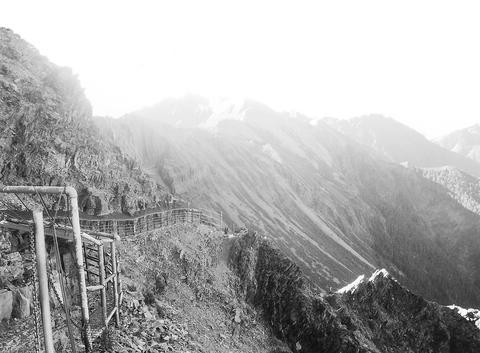
Midnight encounter
"Do you like to hunt? You have to apply," he says, spitting out the last word with his betel nut. He pulls out a bottle from his bag, douses his motorcycle headlamp and rests his car battery in front of my tent. "Do you like Kaoliang? No need to apply," he says and offers the bottle and a betel nut.
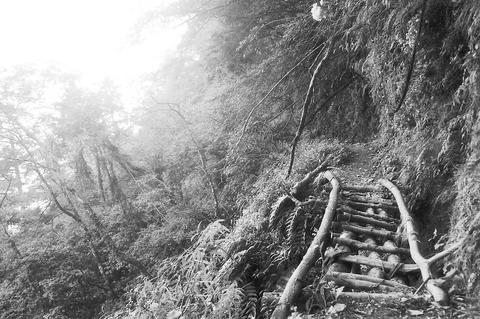
PHOTOS: DAVID MOMPHARD, TAIPEI TIMES
We settle into a lengthy conversation on a frigid night atop Taiwan about wild boar, the law and religion. He's Bunun (布農) and lives in an Aboriginal village outside Tongpu (東埔), in the northwest corner of the national park. It's one of three inside park boundaries that are home to mostly Bunun Aborigines and most of the trail crew are Ming-chen's neighbors and relatives.
There are more than 40,000 Bunun in Taiwan, according to the Council for Aboriginal Affairs and several hundred reside within park boundaries. The Bunun have considered Jade Mountain home since their race began. Called Tongkusaniek in their native tongue, the mountain is the sacred birthplace of their ancestors and has been a hunting ground for millennia, providing much of their livelihood.
Hunting is important to Bunun men, Ming-chen says. Traditionally, the greater a man's hunting prowess, the greater his status among the tribe. The first web of trails in the area was made by the Bunun for hunting, but these have mostly disappeared as the need to hunt waned.
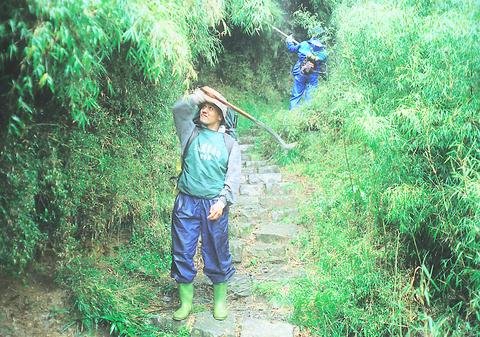
PHOTO COURTESY OF YUSHAN NATIONAL PARK MANAGEMENT OFFICE
"Aborigines made all these trails," Ming-chen says. He's mostly right. The Patungkuan Trail was built during the Japanese occupation of Taiwan in order to police the Aborigines living in what is now Yushan National Park. That they made the Aborigines build the trail themselves supports Ming-chen's claim. The occupying soldiers needed a footpath that was easier for their garrisons to traverse than the ancient ones used by the local Bunun and Tsao populations.
The footpath they raked out of the wilderness snakes out of Tongpu and ends at Yuli
The Yushan National Park Management Office
Behind-the-scenes heroes
Lin Wen-ho (
Several times each year, Lin hires trail crews to implement the projects the administration deems necessary for keeping the trails safe for weekenders. They're mostly hired out of the three Aboriginal villages inside the park and paid a per diem of NT$2,000 (US$58) or more for a 12-hour workday. Crews are also put together each month to pack out trash, Lin says.
But Aborigines' work is by no means limited to the trail. Several of Lin's staff members are Bunun and speak their native language in the office. "Bunun were here long before this was a national park," said office staffer Hsing Chi-guang
When asked about hunting in the mountains, Hsing sidesteps the question, but Lin is quick to cite the laws that strictly prohibit hunting within the park. And what about the residents of the three Bunun villages? "They have to apply," he says.
The reality is much different and a blind eye is often turned to hunting in order to smooth the government's relations with the Aborigines. "There is a lot of animosity between the local Aboriginals and the park administration," says Lee Daw-ming
Ming-chen couldn't agree more. While he seems happy to be employed by the government, he says even if he weren't working on the trail crews, he could still take climbing groups up the mountain and hunt at night. He concedes, though, that he hasn't killed anything in a while. "There aren't as many animals to hunt now ? if I killed them unnecessarily I would have bad hanitu and a bad life. The government talks about conservation, but we've been practicing conservation here for thousands of years."
Spiritual life
Hanitu is the Bunun word that refers to the spirit found in all animals, plants and rocks and is the core of Bunun belief. "Each human being has two spirits, given to them by their father," Lee explains. "One lives on the left shoulder and controls a person's self-interest. The spirit on the right shoulder provides for gentleness and altruism."
The outcome of a person's every action depends on whether their two spirits are more powerful than the spirits of other living things. No member of Bunun society is more powerful than the hunter. Although the meat he brings home supplements his family's diet, it also symbolizes the power of his hanitu, and can elevate his status within the community.
"Great hunters stand as honored members of Bunun society," Lee says. "They have a litany of ritual songs and festivals focused on hunting. Bunun music ? is very well known in the world of ethnic music." But Lee plays down the stereotype that Bunun excel at singing and dancing.
"As famous as the Bunun are for their singing ability, their language has no word for dance!" he says. "The jumping and clapping displayed by women during malasdapang, the feast of triumph, is simply that, jumping and clapping. ? They have no ritual dances. This is unique among the indigenous groups in Taiwan, who all have specific dance steps to accompany specific ceremonies."
No one told Ming-chen as much. Grabbing his rifle, he stands and begins singing, stomping out a dance as heartfelt as it is extemporaneous. He does not sound good and the thin trail-on-a-cliff that is my campsite is a perilous stage for a drunken man dancing in the dark with a gun, but he's nonplussed as to why I'm worried. He finishes off the bottle he's drunk mostly by himself and dons his motorcycle light to leave.
"This is the home of the Bunun people!" he says emphatically. I mispronounce the words and he bursts into laughter; "Bunun people" and "can't live" sound similar in Chinese
"I'm Bunun!" he says. "Of course I can live here."
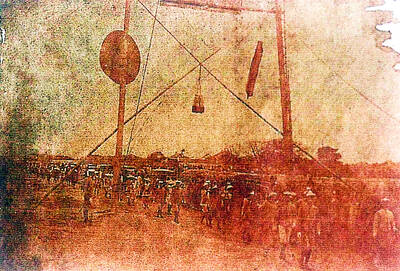
June 23 to June 29 After capturing the walled city of Hsinchu on June 22, 1895, the Japanese hoped to quickly push south and seize control of Taiwan’s entire west coast — but their advance was stalled for more than a month. Not only did local Hakka fighters continue to cause them headaches, resistance forces even attempted to retake the city three times. “We had planned to occupy Anping (Tainan) and Takao (Kaohsiung) as soon as possible, but ever since we took Hsinchu, nearby bandits proclaiming to be ‘righteous people’ (義民) have been destroying train tracks and electrical cables, and gathering in villages

Dr. Y. Tony Yang, Associate Dean of Health Policy and Population Science at George Washington University, argued last week in a piece for the Taipei Times about former president Ma Ying-jeou (馬英九) leading a student delegation to the People’s Republic of China (PRC) that, “The real question is not whether Ma’s visit helps or hurts Taiwan — it is why Taiwan lacks a sophisticated, multi-track approach to one of the most complex geopolitical relationships in the world” (“Ma’s Visit, DPP’s Blind Spot,” June 18, page 8). Yang contends that the Democratic Progressive Party (DPP) has a blind spot: “By treating any
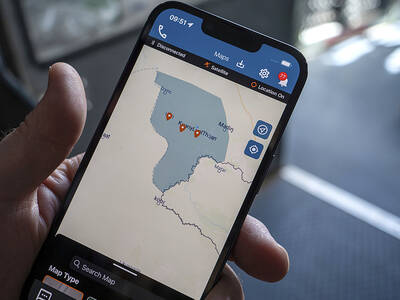
Swooping low over the banks of a Nile River tributary, an aid flight run by retired American military officers released a stream of food-stuffed sacks over a town emptied by fighting in South Sudan, a country wracked by conflict. Last week’s air drop was the latest in a controversial development — private contracting firms led by former US intelligence officers and military veterans delivering aid to some of the world’s deadliest conflict zones, in operations organized with governments that are combatants in the conflicts. The moves are roiling the global aid community, which warns of a more militarized, politicized and profit-seeking trend

This year will go down in the history books. Taiwan faces enormous turmoil and uncertainty in the coming months. Which political parties are in a good position to handle big changes? All of the main parties are beset with challenges. Taking stock, this column examined the Taiwan People’s Party (TPP) (“Huang Kuo-chang’s choking the life out of the TPP,” May 28, page 12), the Democratic Progressive Party (DPP) (“Challenges amid choppy waters for the DPP,” June 14, page 12) and the Chinese Nationalist Party (KMT) (“KMT struggles to seize opportunities as ‘interesting times’ loom,” June 20, page 11). Times like these can